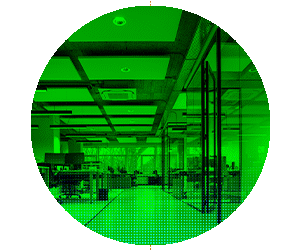No One Likes Overheated Devices
According to McKinsey, cooling now accounts for 40% of a data center’s energy consumption. In high-performance scenarios, the density of a single rack of servers can range from 20 to 30 kilowatts. Add this up over thousands of racks and hundreds of rows, and the result is a meltdown waiting to happen.
Overheated devices can cause several problems. In a best-case scenario, hot devices temporarily shut down, causing downtime but minimal damage. Slightly worse is to have steaming-hot servers that are dependencies for other processes, in turn taking out multiple services. At the most destructive end of the spectrum, soaring data center temperatures can lead to permanent device damage or data center fires.
Despite growing awareness of heat risks for data centers, financial firms are pushing the envelope as they look to implement AI, machine learning and other solutions to stay competitive in a growing market. The goal is improved performance without increased risk.
RELATED: Modernizing your data center will help with artificial intelligence.
The Data Center Cooling Trifecta
Comprehensive cooling is the only solution to combat rising data center temperatures. Three broad cooling options exist:
- Colder climates. Firms may choose to build data centers outside of their local geographic areas or use colocated data centers in other countries to take advantage of lower ambient temperatures, in turn reducing the amount of additional cooling needed. For example, the average temperature in the United States is 66 degrees. In Norway, the average temperature is 48 degrees. This 18-degree difference can significantly reduce the cost of cooling.
- Immersion cooling. This approach involves immersing high-performance devices entirely in water to reduce their overall temperature. While effective, this method is also costly, especially for larger data centers.
- Cooling loops. With direct liquid cooling solutions, cold plates are mounted on the hottest data center components, such as GPUs or CPUs, and cold water is sent to these plates. The water absorbs heat and is sent to a heat exchange, which dissipates the heat. Once cooled, the water is sent back to warm components, creating a closed cooling loop.
DIG DEEPER: Financial service solutions can supercharge your business.
It’s hard to know which option makes the most sense for a given organization. CDW can help firms draft and deploy comprehensive power and cooling plans. Benefits of tactical temperature management include:
- Increased resiliency: Plans can help identify potential disruptions and prevent damaging downtime.
- Improved visibility and use: Cooling management systems can pinpoint opportunities for power or device optimization.
- Reduced costs: Maximized cooling efficiency helps reduce the overall cost of data center cooling.
- Maximized infrastructure flexibility: Well-designed power and cooling systems are modular, allowing companies to scale as data center needs change.
Data centers are getting hotter, but financial firms can’t afford to fall behind by sacrificing performance for reduced power consumption. The solution? Comprehensive power and cooling plans that balance price, performance and risk.
This article is part of BizTech's EquITy blog series.












